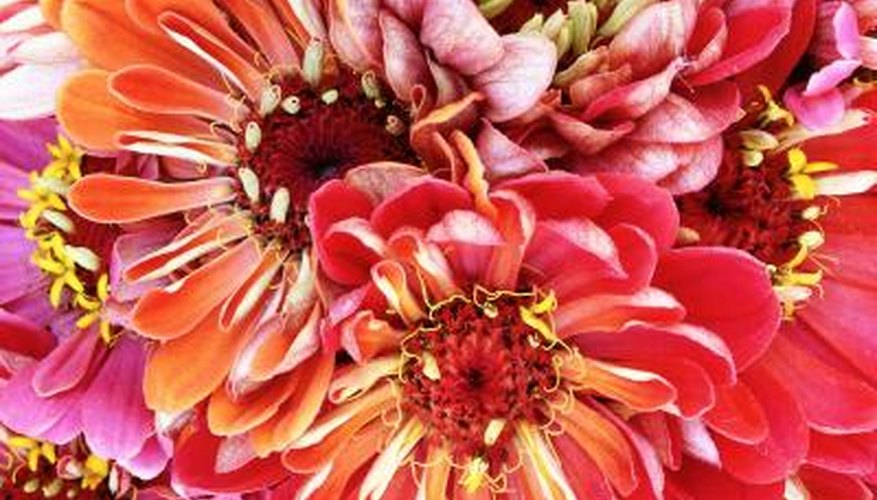Dahliettas (Dahlia pinnata "Dahlietta") are compact hybrid dahlias. The cultivars are sometimes named according to colour, such as Dahlia pinnata "Dahlietta Violet Frost." They have smaller, compact forms than traditional dahlias, but they still retain the wide range of colours and shapes as their full-sized counterparts. Although you can dig up and store the tender bulbs for the winter, they are most often grown as annuals.
Description
Dahlias are a large family of flowers. They come in almost every colour imaginable save blue. The flowers range in size and shape from tiny balls less than an inch across to large, showy, ruffled stunners with a diameter of more than 12 inches. Most Dahliettas are bred to be smaller versions of some of the larger, showier dahlias such as the double formal decorative and double cactus types.
- Dahlias are a large family of flowers.
- Most Dahliettas are bred to be smaller versions of some of the larger, showier dahlias such as the double formal decorative and double cactus types.
Seeds and Tubers
Dahlias and Dahliettas can be grown from seed. Many home gardeners sow seeds in the spring, after all danger of frost has passed, and grow the flowers as bedding plants. Dahlias grown from seed do not stay true to form, however. For this reason, most are propagated from tubers, which are thick horizontal roots. The tubers store the nutrients necessary for the flowers to rebloom year after year. Dahlia tubers are cold-sensitive, however. To survive winters in climates with freezing temperatures, dig them out of the ground and store in a cool, dry location. Unfortunately, they often do not store well and may suffer from fungal infections. Because of this, many home gardeners treat dahlias and Dahliettas as annual flowers.
- Dahlias and Dahliettas can be grown from seed.
- Many home gardeners sow seeds in the spring, after all danger of frost has passed, and grow the flowers as bedding plants.
Culture
All dahlias grow best in rich, well-draining soil and full sunlight. Space smaller varieties, such as Dahliettas, about two feet apart with the roots down and the buds facing up. When the plant produces three sets of leaves, pinch off the centre bud to encourage the bushier, compact growth so desirable in Dahliettas. Keep the soil moist, but not wet, because too much water can cause the tubers to rot. A 2-inch application of mulch can help keep the soil moist and prevent weed growth. Fertilise with a low-nitrogen fertiliser, such as 5-10-5, in late spring and early August. Use the amount recommended on the package as per the size of your planting bed.
- All dahlias grow best in rich, well-draining soil and full sunlight.
- Keep the soil moist, but not wet, because too much water can cause the tubers to rot.
Uses
Traditionally, dahlias are a favourite cut garden flower. The showy blooms last a long time in water and fill out a cut flower bouquet nicely. Dahliettas, which have smaller forms, do not have the long stems suitable for cut flower arrangements. Instead, these plants show off best in window boxes, containers and as border plants.
- Traditionally, dahlias are a favourite cut garden flower.
- Instead, these plants show off best in window boxes, containers and as border plants.
